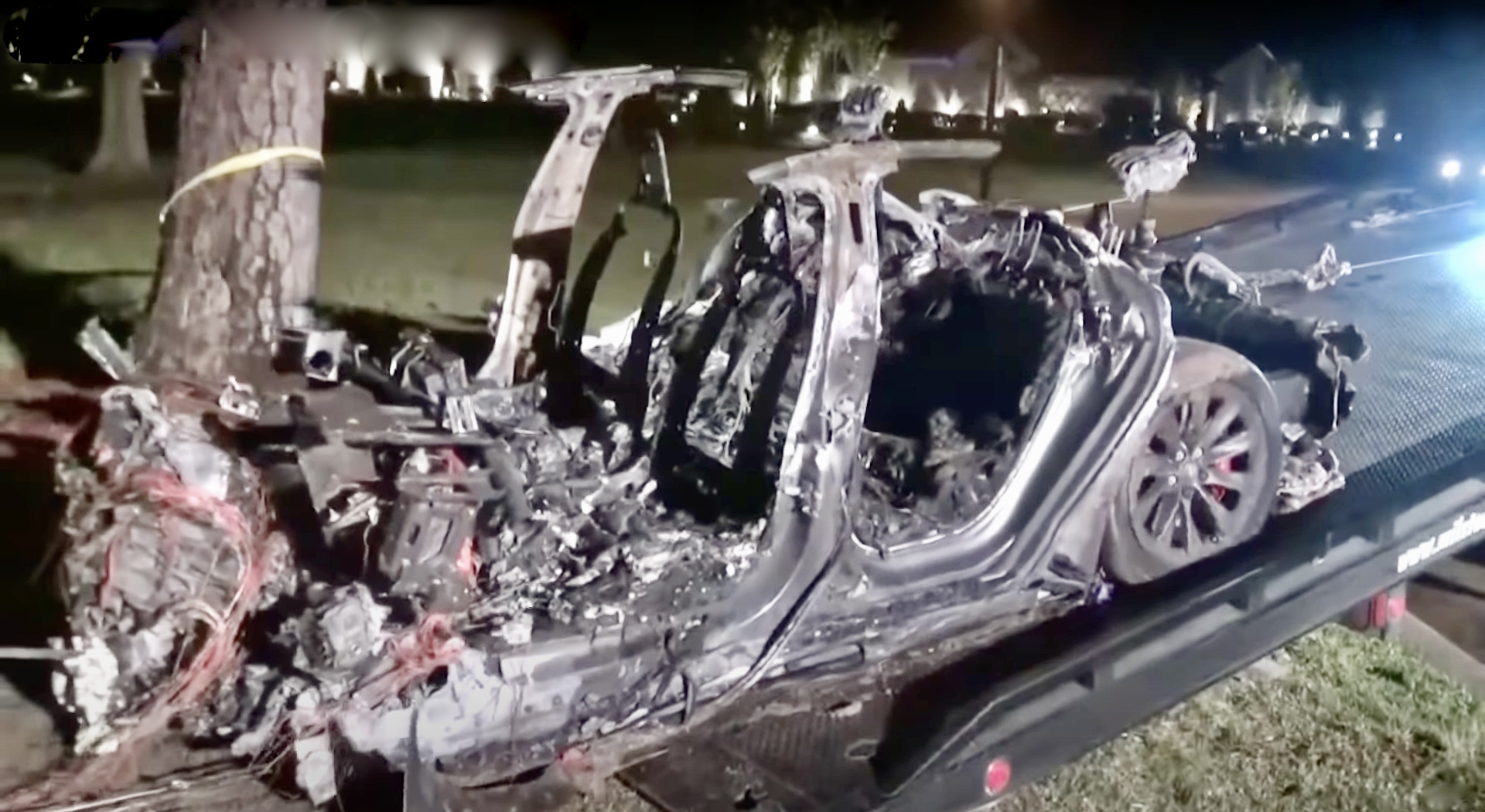

The owner of the Tesla Model S P100D involved in a deadly, fiery crash last month began his journey behind the wheel, according to the National Transportation Safety Board.
After weeks of controversy surrounding the specifics of the Texas crash that killed both occupants of the Model S, the NTSB has published its preliminary report outlining the specifics of the accident. Most notably, as the Associated Press writes, the report includes additional information on a debated crucial detail regarding the driver’s initial position when entering the vehicle.

According to the NTSB’s report, home security camera footage confirmed that the 59-year-old owner of the Model S entered the vehicle via the driver’s door. This helped to provide further context to the origin of the driver prior to the Tesla being in motion and bursting into flames after it struck a tree just 550 feet from its starting point.
After extinguishing the fire, investigators found one man in the front passenger seat and another in the rear. It’s not clear if the 59-year-old owner was the man in the rear of the car, or if it was his passenger, a 69-year-old man who entered the vehicle via the front passenger door.
The bulk of controversy surrounding this accident comes from the report that no one was in the driver’s seat when emergency services arrived. A Harris County constable told news reporters that “no one was driving” at the time of the accident, four words which sparked an immediate response from both Tesla fans and Autopilot skeptics.
Some believed that the man engaged Autopilot and went to the back seat, similar to several viral videos, while others claimed that he may have never even been in the front seat to start with. Tesla owners refuted this, stating the Autopilot could not be engaged unless someone was actively in the front seat. Some noted the possibility of the front door being inoperable following the crash, leading them to believe that the man may have attempted to exit the car via the rear doors but was unable to escape.
Regardless, the NTSB’s report was unable to provide context there.

The NTSB clarifies that while the car was equipped with Autopilot, the likelihood of the Autosteer function being engaged at the time of the accident was low. Investigators attempted to engage Autopilot on the same road in a different Tesla; however, they could not engage the vehicle’s Autosteer function. Traffic Aware Cruise Control—the feature which Tesla confirms was on at the time of the accident—could be engaged on the same road.
Tesla says that its adaptive cruise control is only available when the driver is buckled in their seat and the vehicle is travelling above five miles per hour. If the driver unbuckles their seatbelt, Tesla says that the cruise control function is programmed to disengage.
“The NTSB continues to collect data to analyze the crash dynamics, postmortem toxicology test results, seat belt use, occupant egress and electric vehicle fires,” writes the NTSB in its report. “All aspects of the crash remain under investigation as the NTSB determines the probable cause, with the intent of issuing safety recommendations to prevent similar crashes.”
U.S. lawmakers are calling for Driver Monitoring Systems (DMS) to be mandated in vehicles with certain Advanced Driver Assistance System capabilities. Whether or not a mandated DMS would have prevented this particular accident is unclear; it’s worth noting, though, that Tesla CEO Elon Musk has previously stated that the automaker rejected eye-tracking as a DMS due to its perceived ineffectiveness.
Got a tip or question for the author? Contact them directly: Rob@TheDrive.com